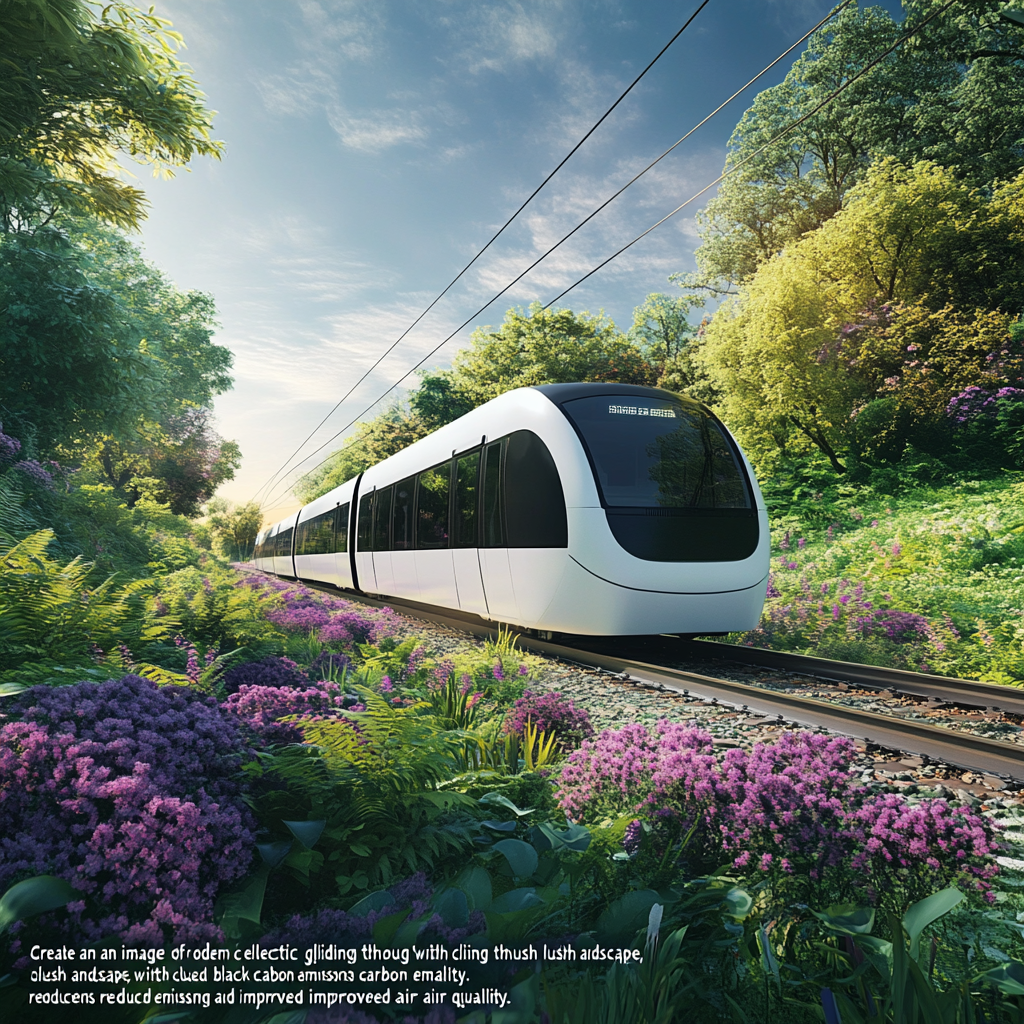
Electrifying railways cuts black carbon exposure by 89%, study finds
The Journey to Cleaner Rails
Well, gather 'round, train enthusiasts and environmental warriors, because it’s time to talk about a revolution on the rails that’s about to knock your socks off! We're not talking about just any train ride; we’re diving into a dazzling transformation that's quite literally electrifying! A new study has sparked a lot of excitement, revealing that electrifying railways can cut exposure to black carbon—a nasty little pollutant—by an impressive 89%. Get ready, because this isn’t just a number; it’s a game-changer.
Let’s zone in on the shiny star of this show: the Caltrain commuter rail system situated in the beautiful San Francisco Bay Area. In late summer 2024, Caltrain decided it was fed up with diesel locomotives. Can you blame them? So, they kicked those smog-spewing beasts to the curb, replacing 29 noisy, fume-spewing, diesel engines with 23 sleek new electric trains. The project? A whopping $2.44 billion modernization and decarbonization initiative that began its engines revving back in 2017. Oh, how time flies when you're saving the environment!
Now, picture it: in a matter of just six weeks, the air around the stations started to clear up. Riders on the new electric trains were suddenly having a much healthier experience, enjoying an average 89% drop in their black carbon exposure. This only goes to show how a simple switch can lead to basics of life being significantly improved—air quality wasn’t just better inside the trains, it was clearer outside too! Local residents and commuters could finally breathe easy, voila! This is public health in action, folks and it feels oh-so-good.
But wait—what's black carbon anyway? Well, let me enlighten you. Black carbon is sneaky. It's a product of incomplete fossil fuel combustion and lurks in the shadows of fine particulate matter (think PM2.5) like a villain waiting to wreak havoc. Historically, diesel engines were major contributors to these emissions. The dirty truth is that exposure to this pollutant can lead to some pretty grim health problems, ranging from respiratory illnesses to heart disease, and—gasp—even an increased cancer risk.
So, when we see numbers jump out of a study—like that of Professor Joshua Apte from UC Berkeley—claiming the electrification of Caltrain is akin to air quality improvements that traditionally take decades, you can't help but feel a spark of hope. The fast track to cleaner air is indeed paved with electric trains. He emphasizes the simplicity and practicality of moving towards railway electrification while also blending in those oh-so-important public health benefits. That's a win-win if I've ever seen one!
And now, let’s have a frank chat about the health aspect because statistics never sounded so persuasive! The study estimates that Caltrain's electrification could save approximately 51 lives from cancer for every million riders, and a staggering 330 for every million train conductors. Think about that for a second—the railways could become a lifeline, dramatically reducing cancer risk among millions of daily commuters. When the U.S. Environmental Protection Agency states that any uptick in cancer risk above one in a million is considered unacceptable, this makes those numbers even harder to ignore.
Cascading effects? Oh, you bet! If we broaden this vision nationally, you can almost picture entire regions celebrating reduced cancer cases thanks to electrified rail lines—as if the air sings cleaner with each passed train. This isn’t just a local win; it’s a national public health victory on a grand scale.
Now, you might be wondering about the hefty price tag attached to all this goodness. Upfront costs can sound scary, especially when we’re talking about laying down overhead wires and building power substations. But I have news for you: electrification brings along a gem of benefits that will make these costs work for you! Electric trains emit zero direct pollutants, drastically reducing harmful emissions like nitrogen oxides (NOx) and particulate matter. Think of it as giving Mother Earth a break!
And that’s not all, folks. Electric trains are the efficient little engines that could! More energy-efficient than their diesel cousins, they sip fuel rather than gulp it. Add in renewable energy sources, and you’re taking a giant step in decarbonizing transport. Plus, who wouldn’t want electric locomotives with fewer moving parts? This means less maintenance, higher speeds, and better service quality. Now, doesn’t that sound enticing?
And let’s talk money, honey. While initial investments might seem daunting, over time, railways can enjoy lower fuel and maintenance costs. In a world where every penny counts, this is indeed music to the ears of railway operators striving for profitability.
So now, let’s shift the lens a bit broader and look beyond California. This electrification success story is a calling card to rail systems across the U.S. that are still lumbering along with decades-old diesel engines. The research screams out to policymakers and transit authorities: "Get with the program!" In a not-so-mysterious twist of fate, electrification policies could pave the way to nationwide improvements in air quality and public health.
But let's not sugarcoat it—while the rails might be beckoning, challenges are manifesting like dark clouds threatening a sunny day. Initial infrastructure costs and lingering logistics will need meticulous navigating. Nevertheless, given that railroads inherently consume energy more efficiently than many other transportation modes, electrification is without a doubt the next logical step toward smashing the barrier between us and a sustainable, low-carbon transport future.
As Professor Apte passionately puts forth his call to action, it’s an invitation to all decision-makers: let’s replicate Caltrain’s incredible air quality upgrades and protect millions from diesel’s grimy grasp.
By the end of this journey through the electrifying rails—not unlike a captivating train ride through rolling hills—one realization stands clear: Caltrain's electrification is not merely an achievement; it’s a testament to what’s possible when we commit to cleaner, greener options. Envision the future, where fewer cancers, cleaner air, and healthier communities become the norm rather than the exception. It beckons us all forward on this electrified path!
Embrace the change! The evidence is here, the future is electric, and the time to hop on board this movement is now.
Want to stay up to date with the latest news on neural networks and automation? Subscribe to our Telegram channel: @channel_neirotoken

